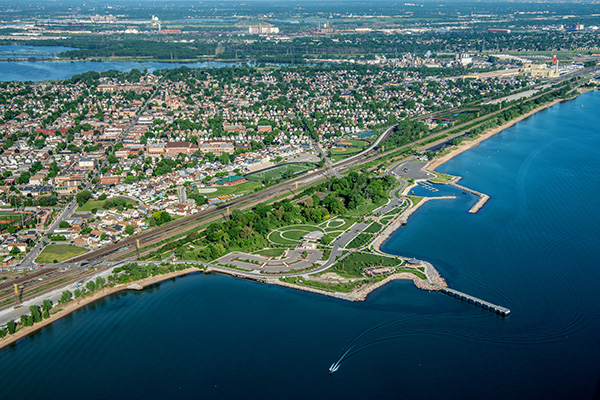
Northwestern Indiana Regional Planning Commission – Economic Recovery and Resilience Plan
Challenge
Northwest Indiana (comprised of Lake, Porter, and La Porte Counties) faces both old and new obstacles on its path to sustainable economic growth. Some, such as the decline of the steel industry, have been impacting the region for years. Others, like the region’s housing and workforce shortages, are nationwide concerns. Since the start of the COVID-19 pandemic in early 2020, a new set of challenges has emerged: recovering from the economic upheaval associated with the virus and building a more resilient economy moving forward. The region must address the immediate economic impacts of the disruption while also cultivating an economy that can withstand future catastrophic events.
Response
In the wake of the pandemic, the Northwestern Indiana Regional Planning Commission (NIRPC) engaged TIP Strategies to prepare an Economic Recovery and Resilience Plan. After compiling a wealth of quantitative research and qualitative input from stakeholders, TIP identified five guiding principles that established a common vision for regional leadership: sustainability, diversification, collaboration, equity, and forward thinking. In close collaboration with NIRPC and the project steering committee, TIP formulated a plan for decisive, targeted action within a framework of three goals: Infrastructure, Talent and Workforce, and Business Vitality. Strategies under Infrastructure (such as increased efforts to complete and promote the Greater South Shore Initiative) seek to strengthen the flow of goods, services, and people by improving and building effective and efficient physical assets. Those within Talent and Workforce (such as targeted messaging to young professionals who have left the region) address the attraction and retention of skilled talent to build a workforce that aligns with regional employer needs. Finally, Business Vitality recommendations (such as enhancing the entrepreneurial network and related wraparound services) intend to create a more competitive regional business climate by supporting and growing employers of all sizes. NIRPC and its partners cannot address every facet of the regional economic situation at once. However, by focusing its leadership, capital, and time on the recommendations, the NIRPC region can and will emerge from the aftermath of the pandemic in an even stronger position than when the crisis began.